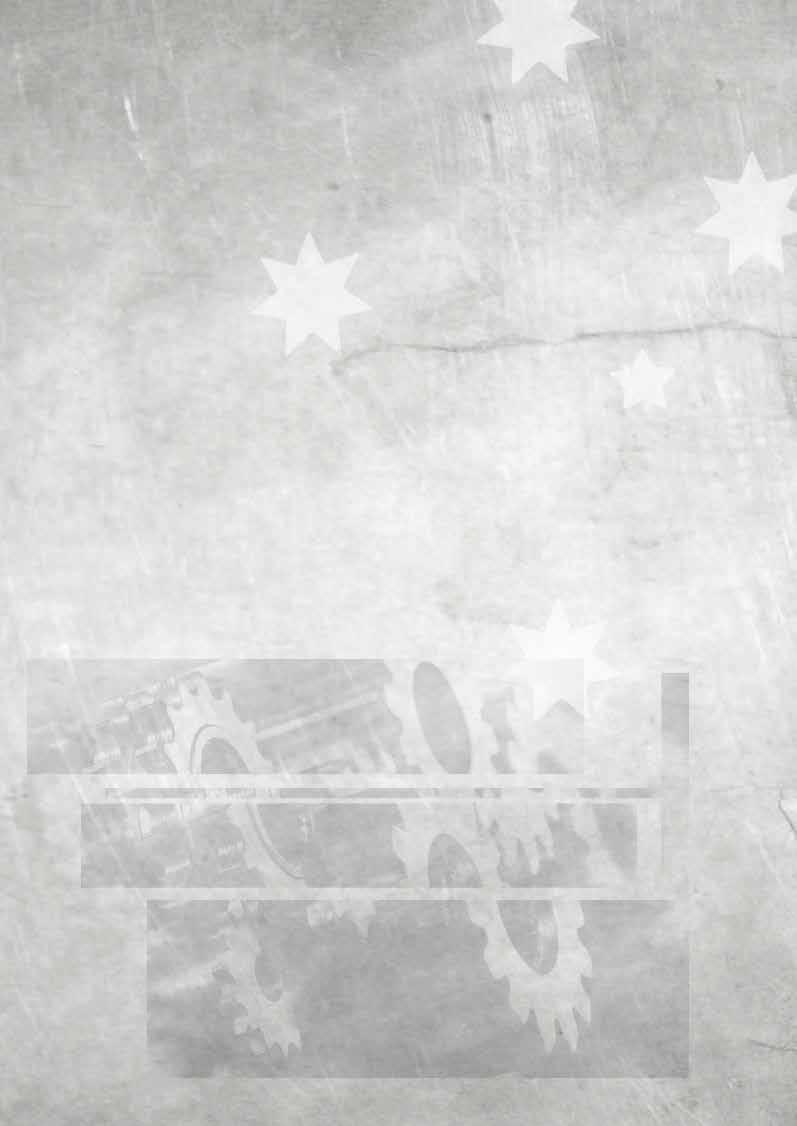
4 minute read
MANUFACTURING HISTORY – A look back in time
from AMT FEB/MAR 2021
by AMTIL
THE WEAPON OF CHOICE
January 1942, World War 2: The need to galvanise Australian inventive genius was spurred by the threat of imminent invasion.
"N o one knows that we will NOT be faced with shortages of an acute character needing all our inventing and improvising genius to overcome” said Frank Forde, Minister for the Army, January 1942, during World War 2. This dire assessment facilitated the development of the Australian Army Inventions Directorate – upgrading it from the poorly-regarded Central Inventions
Board. It was not until Australia faced the threat of invasion in 1942 that effective action was taken to set up such a
Directorate; and only after howls of protest from the public and the press. "Very definitely an inventions board is wanted which will actively encourage and energise Australian inventive genius” added Minister Forde. “The Government will not be content with anything less. This country may shortly be thrown completely on its own resources”. Within a fortnight, Cabinet established an autonomous directorate, with scientific and technical staff and funds to receive, develop and adjudicate on inventions and suggestions from the public and the Services.
I had previously played a part in achieving remarkably rapid production of the Owen gun, that wonderful sub-machinegun invented by Evelyn Owen, the 24-year-old New South
Wales motor mechanic *. And now Frank Forde invited me to take over the new Army Inventions Directorate.
I agreed and got to work. We found an excellent building – the football headquarters in Spring Street, Melbourne – which we promptly took over. He might be a Master of Science in Canberra, or a welding specialist
We set out to change the entire approach to inventions and in Whyalla. We'd interview the inventor, size him up, and if he came encouraged inventors to come forward. We set up a State office up to what we needed we'd ask him to have a crack at solving one in every capital: "You must find ideas," we told the State directors. of the problems. As a result, we achieved a pretty good "marrying "We will open up the Army, Navy and Air Force to you. Get up on up" of the problem and the most likely people to answer it. a soap-box, harangue the people to think." We advertised in the newspapers: "Anyone who has an idea, please bring it forward!”.
Every idea was given a number. There was a good reason for this: a natural inclination to be over-impressed by a name or a title was not to be allowed to influence the judgement of the Directorate. An idea put forward by a big industrialist, a top Service leader or a famous scientist would probably get more favourable treatment than one from Bill Smith, the bottle-oh, or Farmer Brown. So each idea was known only by its number. The best of that week's submissions - those that had survived the culling procedure, in which the crackpot notions and the ideas that defied the laws of nature, were eliminated - were put before them.
A senior Army man gave us a curly problem to solve: "Is there a little dye-tablet-one that troops on night patrol, or in the jungle, can dissolve and rub over their hands and faces instead of mud? We're worried about the chaps using mud for disguise, particularly in the tropics, because the bacteria in the mud could infect scratches or wounds. The tablet must dissolve quickly, with a minimum of fluid.
We put the request out to the chemical companies, and within two days one of them came up with rapidly dissolving dye-tablets of every shade in the rainbow. The soldier covered all exposed parts - by spitting in his hands and rubbing a tablet in his palms. News of this quickly spread, and the Services came up with more and more requirements. From the flow of submissions we got an accurate idea of the special field of interest of inventors all over Australia.
When a particular request from the Services came up that matched the line of thinking of one of the inventors, we'd call the fellow in.

Evelyn Ernest Owen
To be continued…
*Evelyn Ernest Owen (1915–1949). Although “Evo” was self-taught, had little engineering experience and no technical qualification, he invented a submachine gun (the “Owen gun”) which came into service in 1941. The Owen was the only entirely Australian-designed and constructed service submachine gun of World War II. In 1940 Australia had no experience in the development of mass-produced firearms and relied entirely on designs from the UK for the manufacture of its small arms. Despite initial rejection by the Central Inventions Board (the poorly-regarded forerunner to the Inventions Directorate), Owen’s gun finally commenced manufacture by late June 1941, and by September was ready for testing against similar weapons: the American Thompson, the Sten and the German Bergmann. The Owen, which contained just one moving part and was cheaper, proved superior and having been immersed in water, mud and sand, it also proved itself almost impossible to jam while the other weapons faltered and eventually became unworkable. The Owen could be used easily and reliably in jungle warfare - unlike other guns - and entered mass-production in Australia. Found to be the weapon of choice amongst soldiers, more than 45,000 Owen guns were produced during the Second World War; continuing in use during the Korean War and up to the early years of the Vietnam War.










